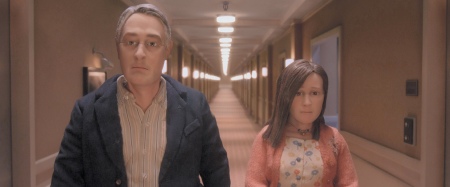 The message of this year’s injustice-haunted Oscar ceremony, if there was one, was that abuse isn’t okay. A bold statement, to be sure, but not unwelcome. From the night’s hands-down highlight — Lady Gaga’s ferocious performance of “Til It Happens to You” accompanied by rape survivors — to the surprising number of spoils (six) that went to Mad Max: Fury Road to Brie Larson’s win for Room (I’m calling it, she’s the new Jennifer Lawrence) to the ultimate and, for me, gratifying upset of Spotlight over The Revenant, the theme was very much “Don’t tread on me,” very solidly anti-victimizer, which again is like being pro-water or anti-cancer.
The message of this year’s injustice-haunted Oscar ceremony, if there was one, was that abuse isn’t okay. A bold statement, to be sure, but not unwelcome. From the night’s hands-down highlight — Lady Gaga’s ferocious performance of “Til It Happens to You” accompanied by rape survivors — to the surprising number of spoils (six) that went to Mad Max: Fury Road to Brie Larson’s win for Room (I’m calling it, she’s the new Jennifer Lawrence) to the ultimate and, for me, gratifying upset of Spotlight over The Revenant, the theme was very much “Don’t tread on me,” very solidly anti-victimizer, which again is like being pro-water or anti-cancer.
Now, does Hollywood also victimize black actors by neglect? Host Chris Rock spoke trenchantly to the controversy, finally declaring that Hollywood isn’t violently, rabidly racist, just thoughtless and snobby in the style of a sorority. That’s a sharp analogy, and Rock took some other good shots, though the bit where he dragged out Stacey “we shouldn’t have Black History Month” Dash for a quick joke at her expense wasn’t one of them. (I guarantee you most of the audience, at home and in the Dolby Theatre, had no idea what that was about.) By and large, Rock stayed out of the way, like all Oscar hosts do — generally you remember the opening monologue and maybe some shtick during the show (like Ellen sending out for pizza or, this year, Rock shilling for his daughters’ Girl Scout cookies), but aside from that, the guy this time who made me mentally cast him as next year’s host was Louis CK, who riffed beautifully on how poor the winner of Best Documentary Short Subject must be.
I now live in a world where Alejandro González Iñárritu has won two Best Director Oscars back to back, and this annoys me much more now than it did a decade or so ago, when all I’d seen was his terrific debut Amores Perros. Now, please, he needs to go away for a while and not make any more aggressively directorial films. His usual cinematographer Emmanuel Lubezki was even more consistent, taking home his third Oscar in as many years, but he did do gorgeous work in The Revenant and I can’t begrudge him the recognition. But he’s become the go-to guy for technically arduous feats that have the faint aroma of stunts (consider also his work on Children of Men), and he, too, may need to chill out and not try to reinvent the wheel every time out.
Nobody doubted Leonardo DiCaprio would grab the gold for The Revenant, and I won’t bore you with musings on why he didn’t really deserve it (I would’ve given it to him for Django Unchained or The Wolf of Wall Street). If ordeals out in the wilderness equalled Oscar-worthiness, the stars of half of Werner Herzog’s films would have won. Alicia Vikander, who seemed to emerge from nowhere to appear in about 27 movies last year, won for The Danish Girl but, in my heart and many others’, she won as much for her more touching and imaginative role in Ex Machina. What hurt was that her win meant a loss for Jennifer Jason Leigh, who might not come this close to Oscar again in her life.
Does that matter? Film history is loaded with people who did great work and were never even nominated. Ultimately the award kicks some careers into overdrive, makes them more bankable and their future work more prestigious. When The Light Between Oceans starts marketing its September release, it will now be able to boast “Academy Award winner Alicia Vikander.” Then again, Trog had Academy Award winner Joan Crawford. Anyway, it would’ve been nice if Samuel L. Jackson had had a chance to add “Academy Award winner” to his business cards, or Michael B. Jordan, or Idris Elba, to say nothing of the generally invisible women of color at the movies last year. I don’t know whether it was boldly relevant or cringingly ironic that the Oscars sent us off to bed with Public Enemy’s “Fight the Power” playing over the end credits. With the Oscars, it’s always a little of both, isn’t it?



